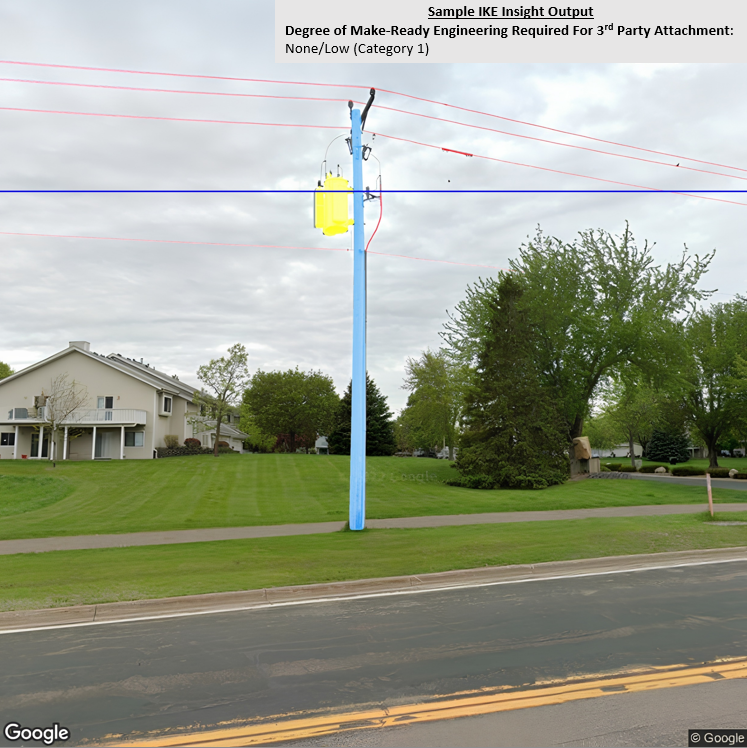The PoleOS™ Company
How better data can help utilities overcome workforce challenges
When it comes to improving the electric grid’s physical infrastructure over the next decade, electric utilities and their engineering partners have their work cut out for them.
That’s because there’s A LOT of work to do and not enough qualified personnel to do it.
As with so many other aspects of planning for the more resilient and sustainable grid of tomorrow, utilities are turning to data as their new best friend to help get more work done with fewer human resources.
Grid Modernization and Workload
Grid modernization efforts largely fall into two essential categories: 1) strengthening the grid against extreme weather events and 2) grid decarbonization.
Both categories cover a WEALTH of projects to be sure, adding up to a sizable scope of work. Both the Federal and state governments recognize the urgency of the moment and have created funding opportunities to incentivize utilities and ensure this critical work gets done.
As part of the Bipartisan Infrastructure Law, the Grid Deployment Office announced in November 2022 that it is administering a $10.5 billion Grid Resilience and Innovation Partnerships (GRIP) Program to enhance grid flexibility and improve the resilience of the power system against growing threats of extreme weather and climate change.
These programs and others aim to accelerate the deployment of “transformative projects” that will help to ensure grid resilience, which is paramount for electric utilities in a new environment with ostensibly competing priorities of electrification and decarbonization.
Even with the government’s financial help, utilities know the path to a better future isn’t easily paved, especially since the U.S. electric grid contains over 600,000 miles of transmission lines and more than 9,200 electric generating units supplying over 1 million megawatts of generating capacity.
A colleague in a recent Utility Analytics article put it succinctly but accurately when she said of the road ahead for grid modernization beginning in 2023, “Utilities have never before faced such monumental change.”
That’s because rising up to the daunting task of taking the electric grid into the future isn’t the only challenge utilities and their engineering partners face.
A workforce shortage in both the utility and engineering sectors has already thrown a monkey wrench into the works and looks as if it’s poised to keep chucking wrenches into the foreseeable future.
Electric Utilities and Workforce Shortage
By now, the utility industry should be well aware that roughly 50% of its workforce will be eligible for retirement over the next decade, and an estimated 25% of the industry’s workforce is expected to retire by the end of 2023, according to the Department of Energy.
The imminent worker exodus means that an outsized portion of the sector’s most experienced and tenured professionals are likely to leave the industry between now and the next ten years, taking critical knowledge acquired over decades of service with them.
The engineering industry–which utilities often rely on to assess and implement complex grid projects–faces similar woes with the sector facing a shortfall of more than 6 million engineers in the U.S. alone as early as next year.
Herein lies another problem. Both utilities and utility-contracted engineering firms are scrambling for and competing against one another for the limited human resources that have the qualifications to do the very grid modernization work for which the U.S. Government has appropriated significant funding.
The grid and the public depending on its modernization can’t wait for another baby boom. So what are utilities and engineering firms to do?
As has been the case with every giant leap mankind has ever taken on its march of progress, innovation courtesy of the human mind is ready to step in and lighten the load.
Data as a Solution to Workforce Shortage
Utilities are beginning to recognize the importance of data analytics in overcoming operational, and workforce challenges.
A 2022 survey of 150 utility leaders concluded that data is central to the sector’s ongoing risk mitigation strategies, yet just 25% of respondents said that improving data and analytics to support decision-making was currently their highest priority initiative.
In a previous IKE Wire article, I explored how data-driven decisions can lead to better long-term asset health for utilities, and I explained how it is not uncommon for experienced utility executives to balk at investing time, effort, and money in data-driven asset management approaches.
But the “doing things the way we’ve always done them” method so many seasoned utility executives cling to in times of change isn’t going to cut it anymore given the looming workforce shortage. That’s why more and more utilities are embracing artificial intelligence (AI) and machine learning (ML) to achieve scaled results with limited resources.
Doing More with Less with AI and ML
In another previous article, we discussed the benefits of AI in creating actionable insights. Let’s now take a few moments to establish some of the known barriers AI poses that can cause utilities to give pause before embracing the technology.
Time is one of those barriers.
Building a robust and accurate AI model takes time, especially for utilities given that AI is not their core business. Once built, the model will take additional time to prove its results–a year or more in some cases.
This is where many utilities seek out on-the-shelf solutions that can be implemented quickly so utilities can reap AI benefits without sacrificing the time it would otherwise take to build the models themselves.
Consider IKE Insight and its ability to take a piece of unstructured data such as an image (or series of images) from Google Street View and process it to locate utility poles within the image. Insight’s AI capabilities can then return a value, rating the pole on a 1-4 scale based on how complex the make-ready engineering will be for a third-party attacher.

The aggregate of the analysis can help a telecommunications firm decide if they wish to expand into a new market, using the estimated engineering cost as a key determining factor.
Consider how many workforce-related challenges an AI approach such as the one just described can solve. How many qualified engineers or utility personnel have to be deployed in the field to acquire the imagery or pre-survey the infrastructure?
None.
How many qualified personnel are needed to review the images and assign the rating value? How many people are required to generate the engineering estimates?
You get the picture. An AI-based solution such as IKE Insight helps utilities do more assessing and analyzing with fewer human resources.
Good thing, too. Because utilities and engineering firms have a lot of important work to do.
Matt Fernandez is a Project Manager and Certified Scrum Master for ikeGPS. He has eight years of experience with a large public utility, performing various roles from managing IT projects to capital planning. He holds a bachelor’s degree in Information Systems Management from Duquesne University and an MBA from The University of Akron.
The latest from the IKE Wire
Safety and speed in pole data collection
Data collection is at the heart of building and maintaining our power and communicati...
Read MoreMy message for Fiber Connect goers: Now is the time to tackle inefficiencies in deployment processes
Last week, I spent a busy few days in Nashville for the Fiber Broadband Association�...
Read MoreVideo Chat: Challenges and Opportunities for Power Delivery Leaders (Part 1)
Overview Energy industry expert and author, Peter Kelly-Detwiler, moderates a discuss...
Read MoreSubscribe to the IKE Wire
Get the latest insights on data acquisition and structural analysis from the ikeGPS experts.
